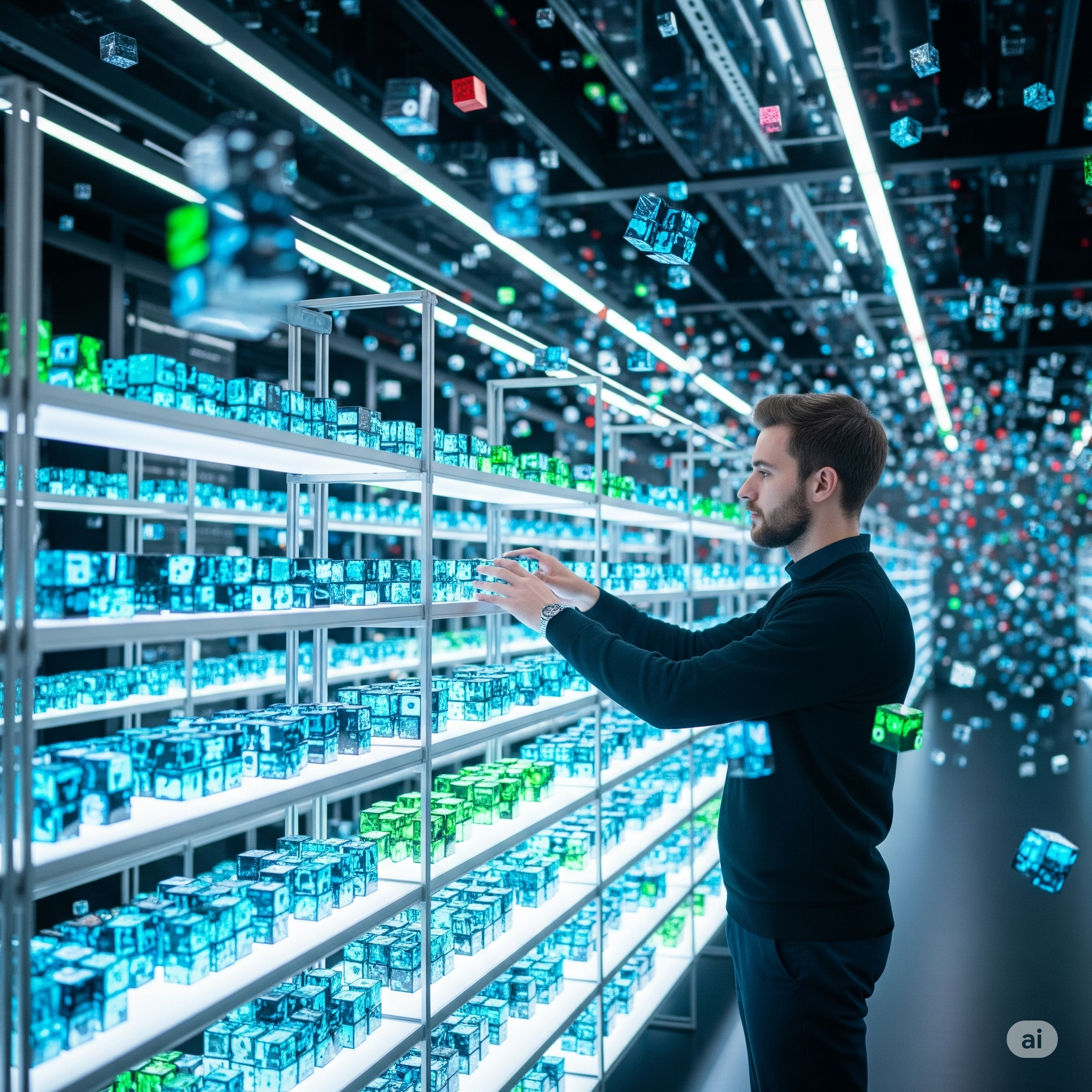July 1, 2025
For the last decade, we’ve been told that data is the new oil. That’s no longer true.
Raw, unrefined data is quickly becoming a low-value commodity, and our companies are drowning in it. We’re paying to store petabytes of information that, like crude oil, is useless without a sophisticated refining process. The real value isn’t in having the data, but in what your organization remembers.
As we enter the age of agentic AI, we’re making the same mistake again. We see an AI’s memory as a technical feature—a bigger hard drive, a faster database. This is dangerously shortsighted. It’s time to reframe our thinking entirely. An AI agent’s memory is not a storage unit; it’s a living, growing, and—most importantly—appreciating asset that will soon define your company’s competitive edge.
The “Karpathy Doctrine” for Live Operations
To understand the value of this new asset class, we first need to look at how elite AI models are built. AI expert Andrej Karpathy, a founding member of OpenAI and former head of AI at Tesla, has championed a core principle that can be summarized simply: garbage in, garbage out. The quality of an AI model is determined not by the complexity of its architecture, but by the pristine, meticulously curated data it’s trained on.
This “Karpathy Doctrine” is the gold standard for building powerful AI. But today, we must extend this doctrine beyond the lab and into the real world.
An agentic AI is never “done” training. Every interaction, every task, every piece of feedback is a new data point that shapes its future behavior. If you allow your AI agent to feed on a diet of digital junk food—irrelevant Slack chatter, outdated reports, low-priority alerts—the value of your magnificent model will plummet.
Curation is the Karpathy Doctrine in action, applied to the entire lifecycle of the agent. A well-curated memory is the process of actively refining your AI’s experience to ensure it only remembers what matters. This is what transforms it from a simple tool into a high-value asset.
How Curation Creates Tangible ROI: Three Case Studies
This isn’t just a theoretical exercise. The difference between a curated and an uncurated AI memory is the difference between a cost center and a profit center.
Case Study 1: The Supply Chain Agent
- Without Curation: An AI agent monitors global logistics. It remembers every single event equally: a truck leaving on time, a minor weather delay on another continent, a driver’s coffee break. It produces noisy reports and flags thousands of “anomalies” that are mostly irrelevant, forcing human operators to sift through the chaos. It adds to the workload.
- With a Curated Memory: The agent’s memory is curated to prioritize events that directly impact delivery times and costs. It learns to forget minor, uncorrelated deviations. It remembers that a specific port has customs delays during the final week of every quarter. Armed with this high-value memory, it proactively re-routes a critical shipment, saving millions in fees and preserving a key customer relationship. Its memory isn’t bigger; it’s economically optimized.
Case Study 2: The Corporate Strategy Agent
- Without Curation: The AI has access to ten years of company documents—emails, meeting transcripts, and project reports. You ask it, “Why did we abandon Project Phoenix in 2022?” It returns a jumble of conflicting opinions from low-level emails and misses the final decision memo from the board. The data is there, but it’s worthless.
- With a Curated Memory: The agent’s memory is structured and weighted. Official decision memos and post-mortems signed off by leadership are given high “memory salience.” Now, when asked the same question, it instantly recalls the definitive documents. It states: “Project Phoenix was officially deprioritized due to a market shift outlined in the Q3 2022 board memo, despite initial positive engineering reports.” This is not data retrieval; this is corporate wisdom, instantly accessible.
Case Study 3: The High-Value Customer Service Agent
- Without Curation: An agent remembers every interaction with a customer, including dropped calls and password resets from three years ago. When the customer calls with a serious issue, the agent’s decision-making is clouded by a sea of trivial data, so it offers a generic, unhelpful response.
- With a Curated Memory: The agent is curated to remember high-value interactions: previous support tickets related to this specific product and the customer’s stated business goals from their onboarding call. It knows this is a high-LTV (Lifetime Value) client. The agent opens the call with, “I see you’re running into an issue with the analytics dashboard again. Last time, we resolved it by adjusting the user permissions. Is that what you’re seeing now?” This curated memory directly increases customer retention by making them feel seen and understood.
The New Competitive Moat is Curated Memory
In the coming years, your competitors will buy the same AI models from OpenAI, Google, or Anthropic. They may even have access to similar market data. But they cannot replicate your company’s unique, accumulated experience.
That experience—distilled and refined—is your curated memory asset.
This is the new competitive moat. It’s an advantage that deepens and widens with every correctly prioritized interaction. While others are drowning in their data lakes, you will be operating with an AI that remembers what truly matters, making smarter decisions, faster.
The most important hire you make in the age of AI might not be another data scientist, but a “Memory Curator”—a leader responsible for shaping and managing your organization’s most valuable new asset.
Stop hoarding data. Start building your memory.






